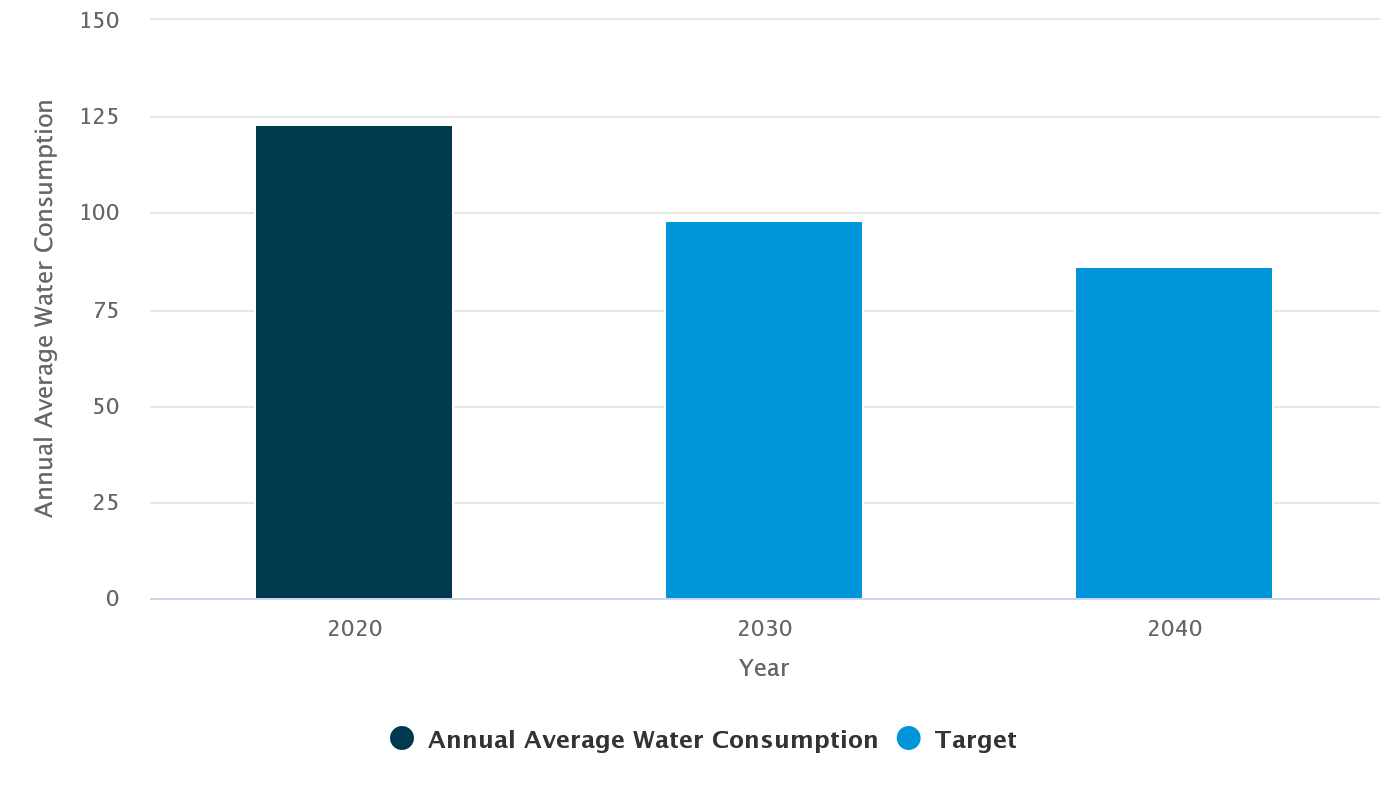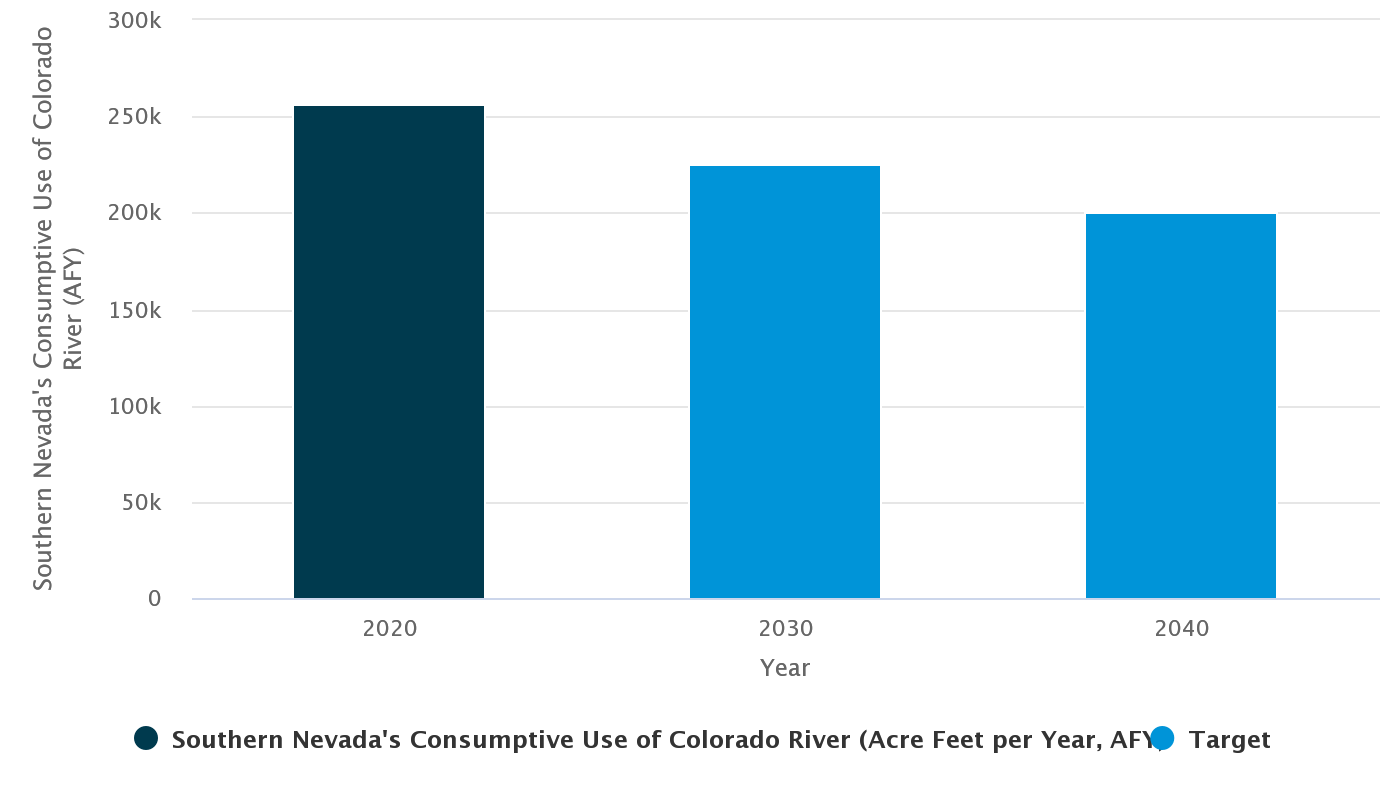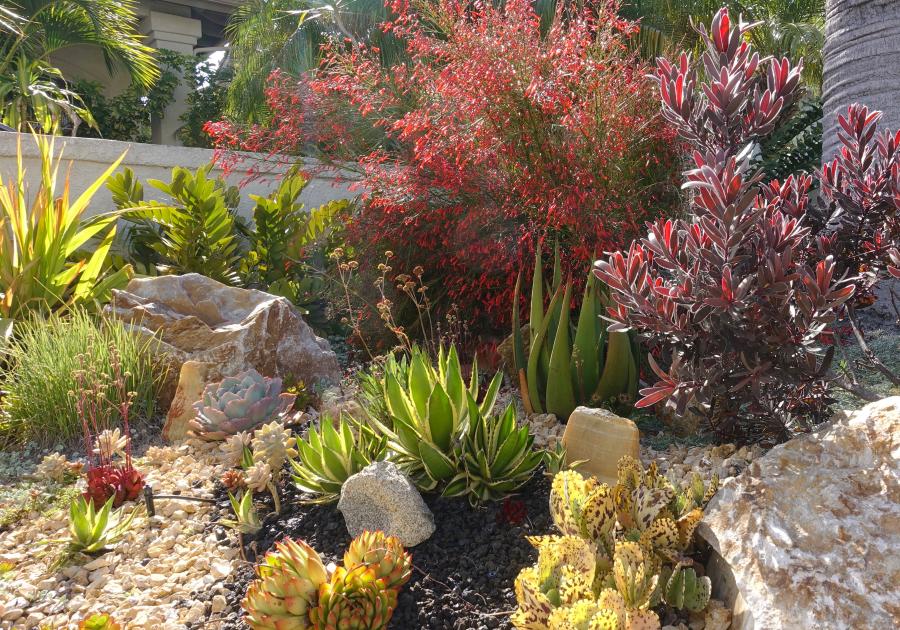Sustainable Water Systems
Jump to a spot on our page!Where We Stand
Our New Normal
Water is a precious resource that our region cannot afford to waste. Research suggests that Southern Nevada will continue to experience more intense and longer drought conditions fueled by climate change, which has a direct impact on our water supply. Fueled by drought and a reduction in snowpack within the Colorado River Basin, Lake Mead’s water level has declined steadily since the early 2000s. As of June 2022, water levels were at 28% of normal capacity, the lowest since it was filled in the 1930s. Drought also worsens water quality issues due to higher concentrations of nutrients and contaminants in the water, which has implications for water treatment systems and the health of natural ecosystems.
What We Can Do

Source: SNWA, Water Resource Plan (2021)
Reducing Our Water Use
Water is a precious resource that our region cannot afford to waste. Research suggests that Southern Nevada will continue to experience more intense and longer drought conditions fueled by climate change, which has a direct impact on our water supply. Fueled by drought and a reduction in snowpack within the Colorado River Basin, Lake Mead’s water level has declined steadily since the early 2000s. As of June 2022, water levels were at 28% of normal capacity, the lowest since it was filled in the 1930s. Drought also worsens water quality issues due to higher concentrations of nutrients and contaminants in the water, which has implications for water treatment systems and the health of natural ecosystems.
Conserving The Source
Governments, agencies, businesses, and residents of Southern Nevada must work together to reduce consumptive use of our main water source: the Colorado River. The Clark County Climate Vulnerability Assessment identified opportunities to increase resilience of the region’s water systems, including:
- Advancing regional collaboration on water resiliency planning and management;
- Working with local agencies to integrate climate related risks (e.g., projected water levels, water quality) into wastewater infrastructure design and maintenance plans; and
- Promoting conservation and preservation practices to protect and enhance water quality and maintain riparian and aquatic habitat connectivity.
Today, 40% of the water withdrawn from Lake Mead is returned, while 60% is counted as consumed. The County will continue to advocate and collaborate with regional and national entities to ensure a safe, reliable future for our threatened water system.

Leading By Example

Goodbye, Useless Grass
Nevada enacted a law in 2021 prohibiting SNWA to deliver water to irrigate decorative grass in streetscapes, medians, parking lots, and other areas where it does not serve a recreational or functional purpose. The law aims to help businesses conserve nearly 10% of Southern Nevada’s water supply and is estimated to save more than 9.5 billion gallons per year once fully enacted.
Our Actions
Next Steps for a Sustainable Water System
Explore the goals, strategies, and actions in the All-In Community Plan. Click the button to see the progress we've made towards implementing each action!
See ProgressAre You All-In?
Conserve Water for a Thriving Future
Complying with water regulations can be easy with rebates and help from SNWA. Check out these resources!

Discover SNWA's tools to navigate your local water restrictions
Water Group LocatorDitch unnecessary water use and save money with the Water Smart Landscapes Rebate Program
Water Smart Landscapes RebateCut down on your commercial water usage and finance water efficiency projects
C-Pace Funding Water Efficiency Projects